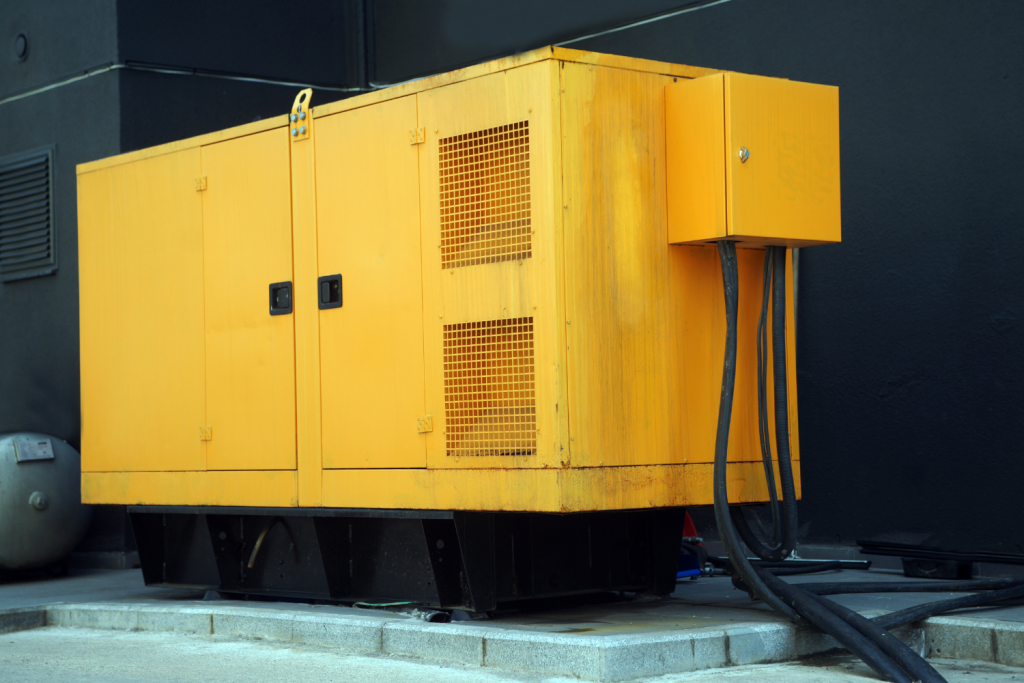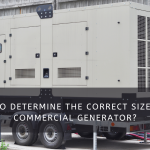Don't see what you need? Check our comprehensive list, here.
Different businesses require different levels of backup power to keep the operation going after the blackout. Doesn't choosing a large size solve all your problems? Well, not exactly. Choosing too large generators can cause :
- damage to the electrical systems
- inefficient power
- your operational expenses to increase unnecessarily.
Then, should you switch to smaller sizes? Not exactly, because it can cause:
- Damage or overheating to your generator.
- The power might be insufficient or unreliable.
- system failures like security or critical facilities.
Since you are already looking for how to size your commercial generator, it's given you know the importance.
However, commercial generators play a much more important role, especially in critical systems operating during an emergency. It includes fire pumps, fire alarms, emergency lighting, and security systems.
So it gets much more crucial to find the right size and to know how to do it; here is how you can do it.
What Are The Correct Power Requirements
Let's first go through the basics to find the right size for your generator.
Make a list of everything you plan to use on your backup generator. It's a crucial aspect, so don't skip it!
Depending on the business and how it operates, the list can vary. For example :
- If you have a retail business, you may be required to power the lights, payment terminals, mission-critical data servers, or security systems.
- If you have a clinic or health care facility, you might need to use the backup generator for life-saving systems for operations and machines.
- If you have a restaurant, the list might include HVAC systems, refrigerators, or other appliances to protect your food from spoiling.
- If it's for an office building, the power backup can be used for telecommunication, lighting, security, or other important systems.
As you can see, the list changes according to the business.
Besides these, commercial generators also include single or three-phase power, total power output, or voltage selections.
Choose the Right Measurement Methods
After you have your list ready, it is time to estimate the power consumption during peak usage.
The power needs can depend on the type of business; however, to understand the full load capacity and determine the measurement, you can use a few methods.
Real-Time Measurement
Start with a clamp on the ammeter on the electrical service and use it on each leg. Add measurements together, as it will give you the total amps used by the fasciitis.
Now divide the total amps by three for three-phase current and two for single-phase current. Multiply the result you get by the supply voltage. Then, do it again by 1,000 kilowatts.
Add your power in kilowatts used in each emergency safety system as per articles 700,701, 702, and 708 of NEC to the kilowatts. This will help in obtaining the load kilowatts.
To understand this, here is a formula to use :
Full load kW = Total amps x supply voltage / 1,000
Reserve capacity = Full load kW x 0.25
For 100 percent power, generator size = Full load kW + reserve capacity
Full Load Capacity By History
Another method to use is Full Load Capacity. Start with reviewing the utility bill for each month, including the peak demand.
Find the highest peak demand that you had over the previous years. Add 25% for reserve capacity.
Square Footage Measurement
The method is commonly used, especially if you are in a retail location, such as a restaurant, grocery, or convenience store.
With that, to estimate your total power needs, it's important to determine the starting load and running load of each equipment and item.
You can use the formula, i.e.
Retail application: 50 kW + 10 watts per square foot
Other commercial application: 50 kW + 5 watts per square foot
Identify The Generator Unit You Need

Remember the calculation you did? It will help you understand the power you need from your backup generator.
The next is to identify a generator unit suitable for your business requirements. However, you don't have to waste your time! Many manufacturers offer performance charts for each product.
For example, the starting and running figures of some electronics and tools can be similar.
| Appliance | Starting Load ( W) | Running Load (W) |
| Disc Grinder | 4000 | 2000 |
| Air Compressor | 4000 | 2000 |
| Water Heater | 4500 | 4500 |
| Router | 1500 | 600 |
| Laptop | 250 | 250 |
| Air Conditioner | 2200 | 1500 |
| Printer | 500 | 500 |
| LCD TV | 230 | 230 |
| Electric Chainsaw | 2400 | 1200 |
| Table Saw | 4500 | 4500 |
Getting the estimated wattage needed for your generator will help you understand the right size.
Choose a generator with at least 10- 20% more capacity than you need. This will give some leeway, especially if you need to update your equipment or more power is needed.
Single Generator Vs. Paralleling
Another factor to consider is whether you want a single generator or a huge diesel one. Does splitting the power burden between two small generators seem good to you?
Let's say, instead of buying a 1200kW, you can buy three small-size generators of 400kW. It is called paralleling, and considering it can be a great option, especially if you are looking for:
More Flexibility
The paneling option gives reliability besides keeping it flexible. When you have multiple generators, you don't have to worry if one gets shut down for any reason, as the rest of the generators can supply the power to keep your business running.
Adding Cost Effectiveness
Considering price effectiveness is an important aspect of business. You can pick the generator for your business depending on the brand or if it's a new or used location.
But nothing matters if your greeter size is not up to the requirement. With paralleling, you can use multiple generators, which can be cost-effective.
You are not paying for the larger generators in sizes that cost a lot, and if one has to stop, it means your business will come to a halt as well.
Extend The Life Of Generators
Load sharing is vital, as it divides it into two or more generators, keeping it easy for the machine to work smoothly.
More practical
The generator size takes up space; you don't want to buy a large option if you have less space. With paralleling, you can buy according to the given space and size.
What Other Factors Should You Consider For Picking The Right Size?
To make your journey to pick the right size generator simpler, here are a few more factors to consider :
Pick the Right Power Phase
Make sure you are choosing the right power phase. You get options like single-phase or three-phase power.
However, most commercial backup systems choose a three-phase service to provide enough power backups.
Choose Fuel Source
You get options like diesel, gasoline, propane, and natural gas. While diesel and gasoline are more efficient than propane, they are mostly ideal for sporadic use without degradation in storage.
Consider Noise Rating
Another important aspect is noise rating. However, it depends on your installation site; consider the rating while the generator is in use.
Consider Your Operation
You can pick generators that operate either manually or automatically.
However, most of the commercial generators have an automatic switch, which means if there is any power cut or the main primary power fails, the generator will automatically switch to backup.
Get the Perfect Size Generator For Your Business
Finding the right size for your generator is important. Companies are relying more or completely on generator backups, especially for emergencies and ensuring the operation keeps going even during power cuts.
From this, now you know how to pick your generator, but are you looking to purchase a perfect generator for your business?
At Power Generation, we provide our online streamlining process that offers the right equipment at the right price.
To know more, contact us right away!
Commonly Asked Questions About Properly Size A Commercial Generator
What are the standard generator sizes?
The standard ones you get depending on watts, such as 6.5 kW, are for survival for appliances operating, 8 kW is a mid-sized to help during power cuts during weather conditions, and 10 or 12 kW is a perfect backup power system for better comfort and security.
How are the generators sized?
Generators are rated as per their kVA or kilo-volt-amperes, a measure of apparent power. It tells the total amount of power used in a system.
What is the average size of a commercial generator?
Generator size depends on the industry and the application. However, industrial generators can size anywhere from 50kW to more than 3 Megawatts.
What size generator do I need for my commercial building?
Using the square footage will help you have a solid starting point; a retail building requires a generator that supplies 50kW plus with additional per square foot. For commercial use, you might need 50kW of power but with a 5W square foot extra.

